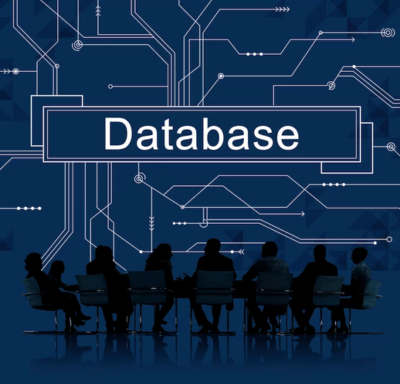
About us
Our Services
Our Expertise
Our Experience
Follow us
Why e2logy?
- We strive to provide superior customer service and ensure that every client is completely satisfied with our work.
- Our engineers are trustworthy, dedicated, and experienced and will go the extra mile to solve your IT issues.
- We are committed to delivering outstanding, cutting-edge IT solutions that add real value that goes beyond what is expected.

AWS Databases: How to Choose?

Any modern business relies heavily on data.
An organization’s ability to collect information about its customers, operations, products, and services is essential to its survival, as well as to its efficiency in day-to-day operations.
To provide exceptional customer experiences, optimize processes, and make informed, proactive decisions, it is imperative to be able to safely and securely store, secure, and retrieve data.
In light of the importance of data and its proper handling, it is a big decision to decide how it should be managed. AWS, the largest cloud service company, offers customers more options than ever before when it comes to database storage.
Having so many databases to choose from makes it easier to find one that suits your company’s needs without compromising — as long as you understand their advantages and disadvantages.
What is AWS Database?
AWS Database Services are cloud-based databases offered by Amazon Web Services.
With Amazon Web Services Database, you can run your applications in the cloud with scalable, durable, and easy-to-use databases. Aside from automatic scaling, automated backup and disaster recovery, and automatic database updates, it also provides automatic database scaling. Applications’ performance is closely correlated with their underlying databases’ performance.
Advantages of AWS databases
Among its features are automatic snapshotting, durability, and high performance, which make AWS’s cloud-based databases reliable, scalable, and durable. Their modular architecture, which allows for the easy addition of new features and applications, makes them easy to use. Databases on AWS include:
- Managed: AWS Database services eliminate many management, setup, and monitoring responsibilities for businesses. They are fully managed and enable businesses to focus on their core business.
- Reliable and secure: Data governance with different security levels is available, such as network isolation and end-to-end encryption, in addition to multi-region, multi-primary replication. Using AWS databases ensures that mission-critical enterprise applications are available, reliable, and secure.
- Adaptable: AWS database services are highly scalable when compared with popular alternatives. Neither AWS’s relational nor non-relational databases suffer from this issue.
Types of databases on AWS
Let’s explore some of the most popular AWS databases now that we know what AWS databases are and why they are so valuable.
1. Amazon Aurora
Known for its simplicity and speed, Amazon Aurora is an engine that runs on MySQL.
A typical PostgreSQL database is three times faster than a MySQL database, and typically up to five times faster than a standard MySQL database.
As a result of AWS’s Relational Database Service (RDS), Aurora databases are highly secure and durable. Aurora databases can be quarantined for use only within their network, if necessary, by creating them within an Amazon Virtual Private Cloud (VPC). AWS Key Management Service allows you to manage all network keys, and they are all user-assigned.
Aurora databases replicate data six times across three Availability Zones (AZs) to guarantee availability.
In the event of corruption, the data copy is retrieved from the main database and merged back in. The S3 storage platform from Amazon is continually backed up.
2. Amazon Redshift
Cloud-based data warehouse solution Amazon Redshift allows users to store and analyse large amounts of data in a fully managed environment. A large-scale database migration can also be accomplished using it.
3. Amazon RDS
Relational databases, or Amazon RDS, are among the most widely used databases supplied by Amazon Web Services. There are several open-source relational database solutions available through Amazon RDS, including some that are part of AWS.
Relational databases can be set up, run, and grown using RDS in the cloud. Administrative operations are automated, among them provisioning of hardware, configuring databases, performing backups, etc.
There are three methods of managing these database engines: centralized administration panels, command-line interfaces, and API calls. As well as Amazon Aurora, MySQL, MariaDB, PostgreSQL, Oracle, and Microsoft SQL Server, it is compatible with six prominent database engines.
4. Amazon Dynamo
An AWS cloud-based NoSQL database service, Amazon DynamoDB offers a fully managed service. Providing fast, predictable, and seamless scalability is one of its greatest advantages. Business operations can be offloaded to distributed databases, which simplifies scaling and operation. To provide highly available and durable security, backup, and recovery services, it offers managed security, backup, and recovery services.
5. Amazon ElastiCache
Data storage in memory is managed by ElastiCache. As well as setting up hardware, configuring it, monitoring it, upgrading it, and backing it up, it automates these tasks. Data replication and sharing enable ElastiCache to scale memory and write operations.
6. Amazon DocumentDB
Amazon DocumentDB is the fastest, most efficient way to store and query documents. It is a non-relational database.
Its compatibility with MongoDB workloads makes it an attractive option. DocumentDB provides all of the benefits of MongoDB, including better performance, scalability, and management, without the need to handle MongoDB infrastructure. Developers can use the same apps, drivers, and tools.
Compared to MongoDB, Amazon DocumentDB’s compute and storage aspects are separated to allow for independent scaling. In addition to high availability, durability, security, and autoscaling, DocumentDB comes with all the features of an AWS database.
7. Amazon Keyspaces
A fully managed, scalable, and highly available Apache Cassandra–compatible database service, Amazon Keyspaces (for Apache Cassandra). As you already have Cassandra application code and developer tools in your hands, you can run them on AWS with Amazon Keyspaces.
High-speed data processing can be used to maintain industrial equipment, monitor trade, manage fleets, and optimize routes, for instance.
8. Amazon Neptune
Graph storage is provided by Amazon Neptune. Low-latency access to massive amounts of relationship data is made possible by this technology. There are specific connections between the data stored in a graph database. There are no queries or tables, just edges, and vertices, making it appear to be a NoSQL database. Continuous backups, read replicas, and point-in-time restores are also available.
Applications that use highly linked data sets can be built and operated with them. Data about relationships can be stored and accessed in a low-latency manner. Gremlin, RDF, and SPARQL are all compatible with Neptune.
9. Amazon Timestream
IoT and operational applications can store and analyse trillions of events per day with Amazon TimeStream, a fast, scalable, and serverless time series database service. Relational databases cost 1/10th of the price of this solution and are 1000 times faster.
Conclusion
If you want to choose the right database, you should do a perfect analysis of your needs and expectations. You should consider all aspects of a database, from how to implement it, to costs, since it is one of the most crucial parts of an application.
It is impossible to choose one database over another. Your particular use case will determine what you need. Using both databases simultaneously and leveraging their strengths can sometimes be the best option. Ensure you select the database that works best for your project!













